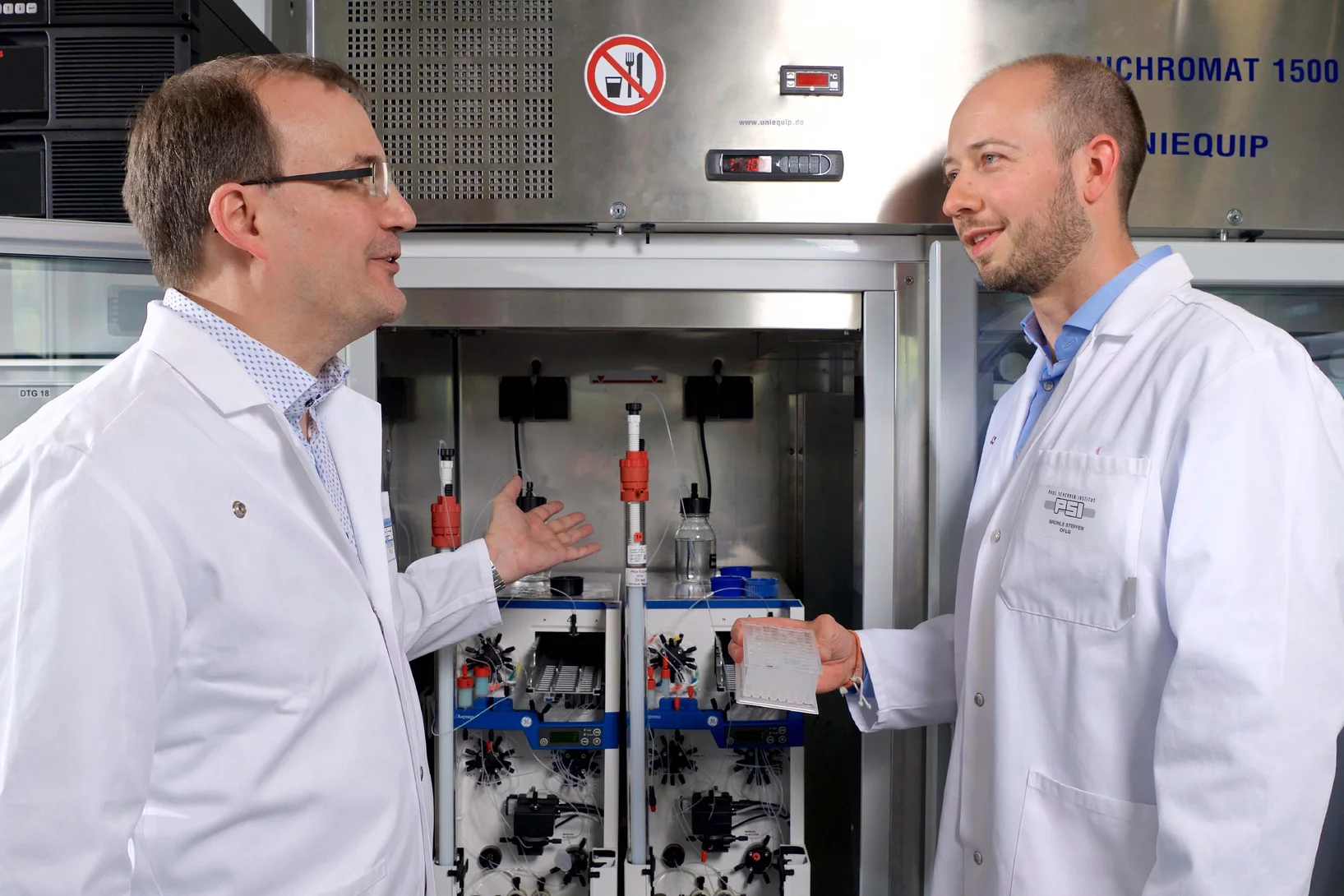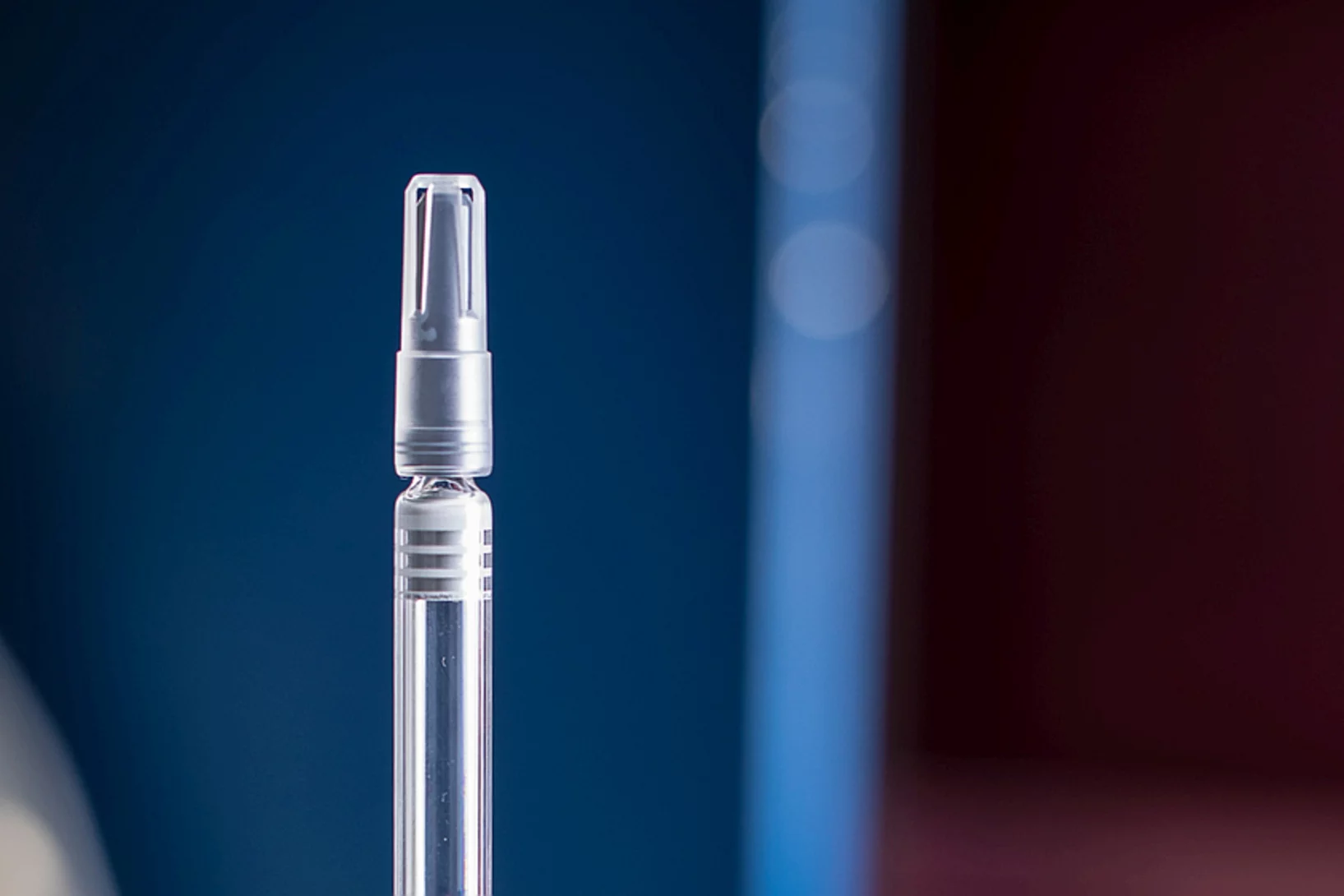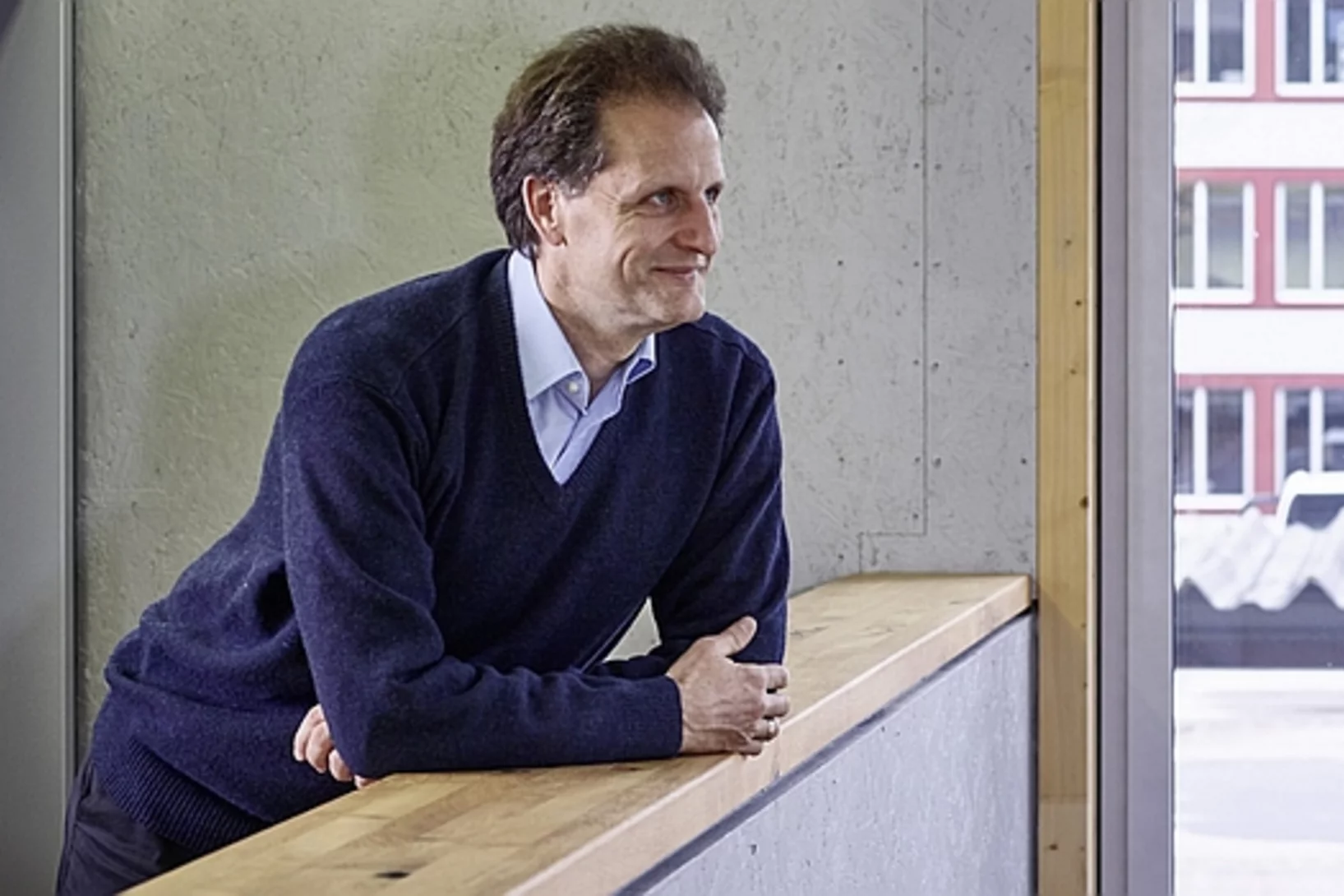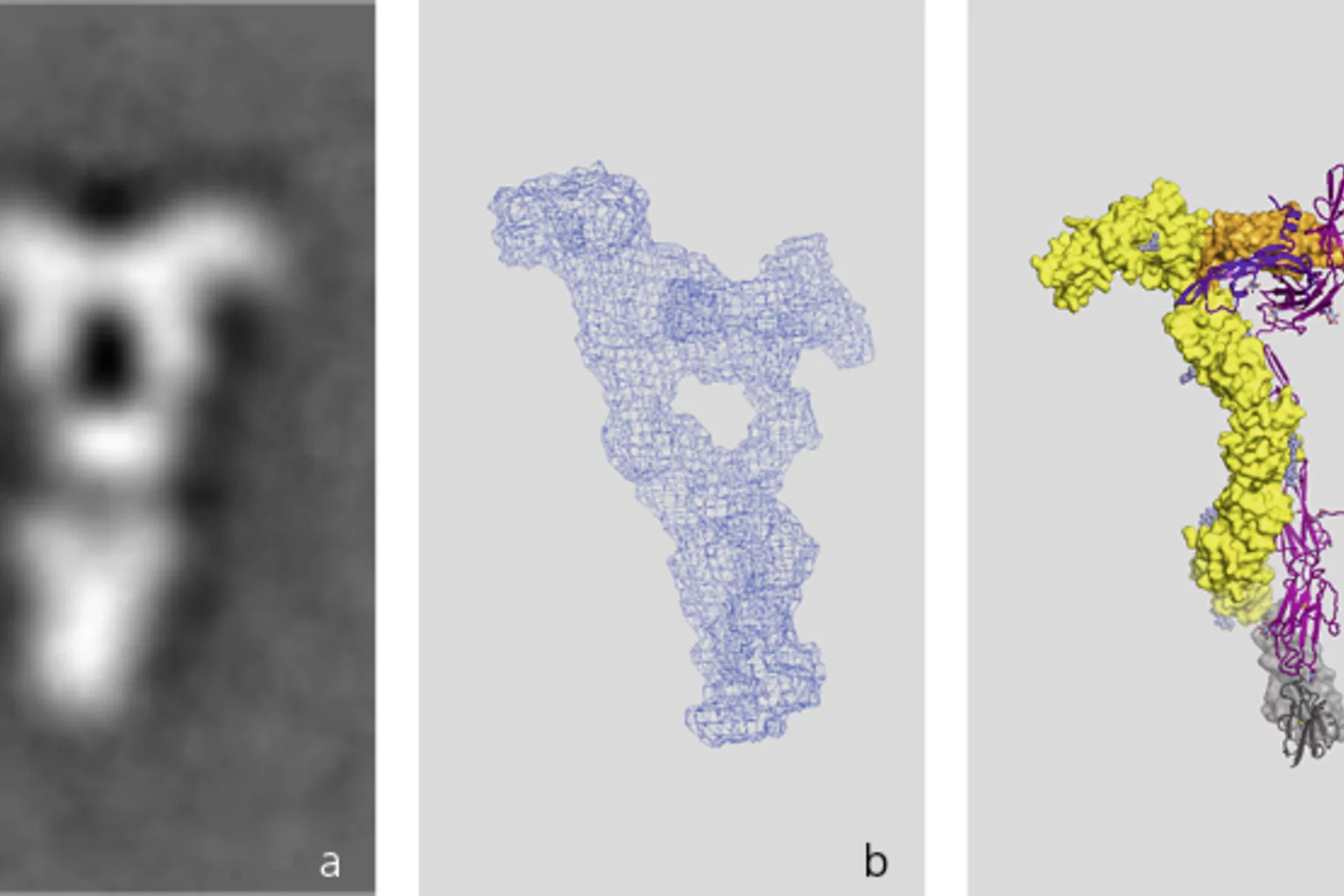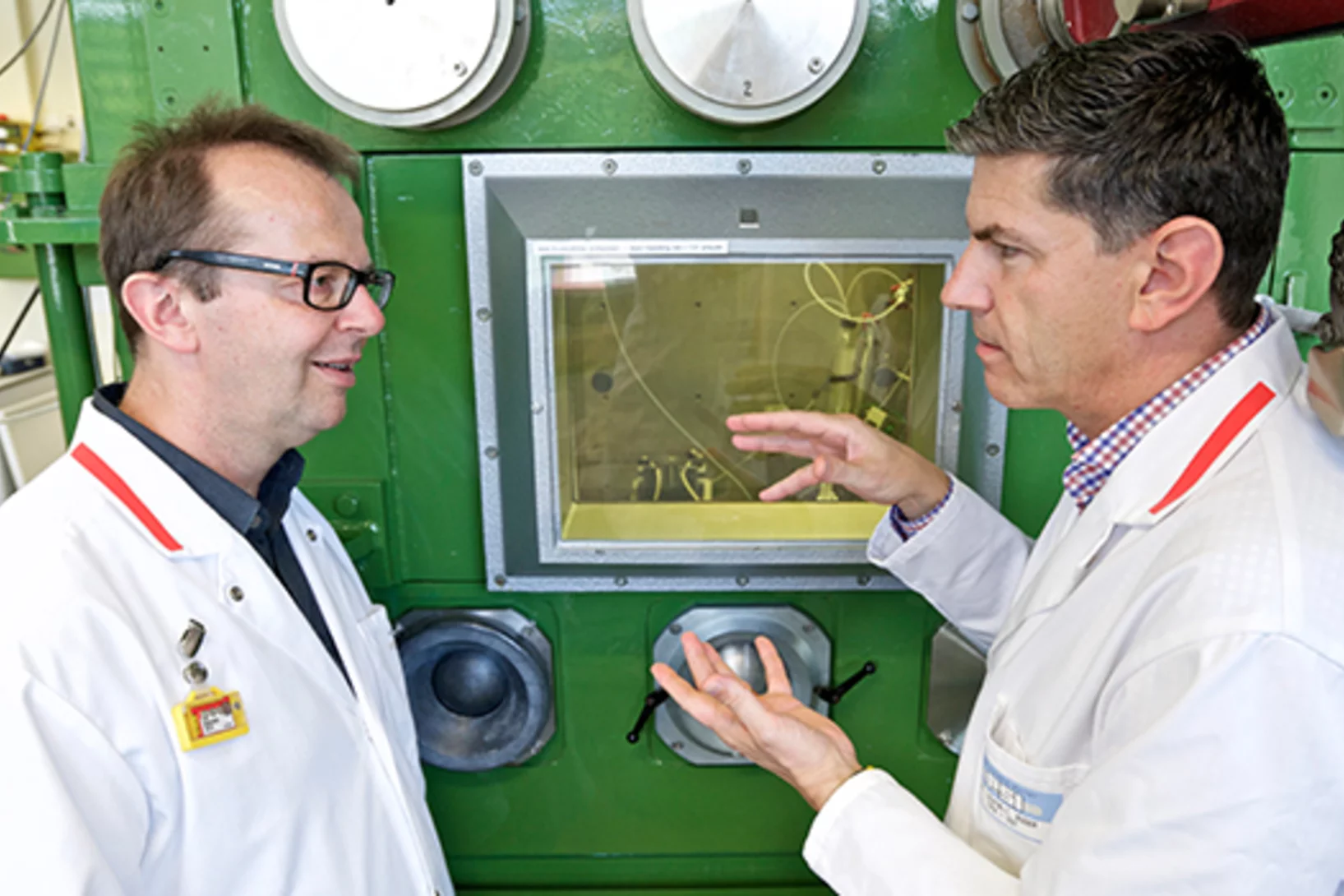In the area of Health Innovation, several research groups at PSI are engaged in the study of fundamental questions regarding biology and cancer therapy. For example, they explore the structure of proteins – extremely complex biomolecules that are responsible for many different functions in organisms. Using PSI’s large research facilities, scientists also explore processes in biological tissue in order to fully understand their function and the development of specific diseases or deterioration processes. The ultimate goal is to find medicines that allow people to live as healthy a life as possible.
Patients with specific types of cancer are treated at the proton therapy facility on the PSI campus. Radiopharmaceuticals provide cancer treatments for very small tumours distributed throughout the body.
Find out more at: Overview Health Innovation
Preventing tumour metastasis
Researchers at the Paul Scherrer Institute PSI, together with colleagues from the pharmaceutical company F. Hoffmann-La Roche AG, have taken an important step towards the development of an active substance against the metastasis of certain cancers. Using the Swiss Light Source SLS, they deciphered the structure of a receptor that plays a crucial role in the migration of cancer cells.
Bringing information into the cell
Researchers at the Paul Scherrer Institute PSI have elucidated an important part of a siganalling pathway that transmits information through the cell membrane into the interior of a cell. This exists in all mammals and plays an important role, among other things, in the regulation of the heartbeat. The new findings could lead to new therapies.
Children are her passion
At PSI, Beate Timmermann built up a programme providing proton therapy for children with cancer at the same time she was raising her own son. Today she is head of the Clinic for Particle Therapy at the West German Proton Therapy Centre in Essen (WPE) and is considered one of the most accomplished experts in this field.
A biotechnological revolution
Gebhard Schertler is head of the research division Biology and Chemistry at the Paul Scherrer Institute PSI and professor for Structural Biology at ETH Zurich. In this interview he talks about biological research at PSI and the future of drug development.
Imaging the inside of injection needles with neutrons
Researchers from the Paul Scherrer Institute PSI, the University of Basel and Roche have used neutron imaging to investigate why cool storage is crucial for syringes pre-filled with a liquid medication.
Opening: Advanced technology against cancer
With proton therapy, certain tumours can be irradiated with exceptional precision – while, the surrounding healthy tissue is optimally protected. In Switzerland, this kind of radiation therapy is only possible at PSI. In a joint project with the University Hospital Zurich and the University of Zurich, PSI has expanded its capacity with a state-of-the-art treatment facility: the new, 270-ton Gantry 3.
PSI spin-off GratXray wins Swiss Technology Award 2017
A spin-off from PSI has received this year's Swiss Technology Award: The young company GratXray is developing a new method for early diagnosis of breast cancer.
A new bio-robot
With a new method for modifying antibodies, Philipp Spycher, winner of a Founder Fellowship at the Paul Scherrer Institute PSI, wants to develop drugs that are more stable and, thus, have fewer side-effects.
Testing the Limits for the Patients' Benefit
Proton therapy is already a success story at the Paul Scherrer Institute PSI but researchers remain dedicated to making treatment faster and safer.
Big help for small children
When small children develop cancer, the whole family is affected. Staff at the Paul Scherrer Institute PSI’s Centre for Proton Therapy combine target-oriented proton beam irradiation and a caring, warm-hearted atmosphere to help these children.
Getting a Handle on Safety
Proton beams don’t just cure cancer. They can also damage healthy tissue. To make sure that this doesn’t happen, PSI’s Centre for Proton Therapy carries out over 350 safety tests a year. The results speak for themselves: several thousand patients have undergone proton irradiation treatment here in Villigen. There’s never been an accident.
Rays of hope for patients
For over 30 years, patients with a particular form of ocular tumour have been treated at PSI by means of proton irradiation. The tiny particles hit their target with millimetre precision, without endangering other structures of the eye. The irradiation facility OPTIS, developed at the PSI Center for Proton Therapy of the PSI, is a success story, considering that for more than 90 percent of the patients treated to date, the eye could be saved.
In start-up companies, getting it done is a matter of survival
A pharmaceuticals manager at Roche for a long time, now he is the founder of a biotech firm on the campus of the Paul Scherrer Institute PSI: Michael Hennig knows the trends in the medical sector. In this interview he explains why the medicine of the future needs the innovation power of publicly funded research, and why he chose to locate his start-up leadXpro so close to PSI.
In cold water
Martin Ostermaier wanted to break out of the comfort zone of science. Now, instead of pipettes, the biochemist is dealing with investors and patent law.
Added value for cancer patients
At the Paul Scherrer Institute PSI, cancer patients receive a treatment that is unique in Switzerland: proton therapy. This state-of-the-art form of radiation therapy against cancer has major advantages, compared to conventional irradiation, in terms of effectiveness and side-effects. The PSI has its own Center for Proton Therapy dedicated to this special treatment. Its pioneering work has not only helped several thousand patients, but also has fundamentally changed proton therapy worldwide.
In the focus of the protons
At the PSI, researchers work with radioactivity every day in order to develop advanced treatment methods for patients. Naturally, they take special safety precautions working with a material that decays. It's a race against time. To make sure everything functions smoothly, a dedicated work group takes care of the infrastructure.
Back to life
Doctors had discovered, behind Gabi Meier’s right eye, a tumour that surrounded the optic nerve. Only at the PSI was there still one possibility to treat the tumour in such a way as to preserve neighbouring structures and the eye. A few months after the proton treatment was over, I realised that I could see more and more, she said in an interview. “Just dimly, it’s true, but I could see! That was sensational!”
20 years of high-precision combat against cancer
On 25.11.1996, at the Paul Scherrer Institute PSI, the world’s first cancer patient was treated with a new irradiation method: the so-called spot-scanning technique for proton beams. What’s special about it: The beam has its effect only at the depth where the tumour is located; healthy tissue above and below it is preserved. The method, developed by PSI researchers, was a breakthrough at the time and quickly became a successful product.
Designer nuclide for medical applications
Researchers at the PSI have for the first time used a cyclotron to produce the radionuclide scandium-44 in a quantity and concentration as needed for medical treatment. With that, they have achieved the first precondition for scandium-44 to be used one day for medical tests in hospitals.
To starve a tumour
PSI researcher Kurt Ballmer-Hofer is concerned with the question of how tumours could be starved by preventing the development of blood vessels. After 40 years of research that yielded many fundamental insights about the formation of blood vessels, one of the key molecules has been found; further research is expected to enable clinical applications.
Hitting cancer from the inside
Researchers at the Paul Scherrer Institute PSI are now investigating a new method to channel radioactive substances directly into the nucleus of a cancer cell. Through this approach, the radiation source remains inside the cell and works in a more targeted way, because it gets closer to the cell's genetic information.
Medicines made to order with pinpoint precision
At PSI, scientists are developing new medicines against cancer. These contain radioactive substances that can be injected into the patients and thus make their way to the tumour. There, in direct contact, their radiation should destroy the cancer cells. Before such a radioactive medicine can be tested on patients in the first clinical trials, however, its safety must be guaranteed to ensure that the patient will not be harmed. Therefore every agent is produced at the PSI under sterile conditions and tested – separately for each patient, and only on the doctor's order.
Developing a new drug against thyroid cancer
Researchers at the Paul Scherrer Institute PSI have developed a drug to trace and treat a particularly malignant strain of thyroid cancer more effectively. One advantage of the new drug is that it can be used to treat a strain of thyroid cancer where the established treatment is ineffective. The researchers at PSI have developed the new drug to such an extent that an initial study conducted on cancer patients at the University Hospital Basel can now get underway.
Probing what sets the heart racing
New insights into the workings of important drug receptorsMany medical drugs operate on specific receptors located in the outer walls of our body’s cells. One of these is called the beta-1 adrenergic receptor. Among other things, it is responsible for palpitation, the racing pulse that we feel with stage fright or infatuation. How it transmits signals to the cellular interior can now be revealed in detail. These findings could help scientists better understand many drugs' mode of action.
Targeting cancer
There are tumours where nothing seems to help: not chemotherapy, not external radiation therapy, not an operation. Often, they have already metastasised and can no longer be destroyed using conventional methods. The only option left here is internal radiotherapy with targeted radioactive drugs that strike directly at the heart of the disease. In order to make this possible, twenty specialists have been conducting research at the Centre for Radiopharmaceutical Sciences at the Paul Scherrer Institute PSI, a joint facility of PSI, ETH Zurich and the University Hospital Zurich.
3D nanostructure of a bone made visible
Bones are made up of tiny fibres that are roughly a thousand times finer than a human hair. Researchers at the Paul Scherrer Institute PSI have developed a new computer-based algorithm with which they were able to visualize the localised order and alignment of these nanostructures inside an entire piece of bone for the first time.
Robust X-ray machine for developing countries
The Paul Scherrer Institute PSI is involved in a project conducted by several research institutes (spearheaded by EPFL) to devise an X-ray machine especially for developing countries. The device should be able to cope with tropical climes and be easy and cheap to repair. PSI researchers are focusing on producing a cost-effective detector that is necessary for the imaging. The detector registers the X-ray light much like a chip in a digital camera.
Fighting tumours with protons
Interview with Damien Charles WeberDamien Charles Weber has been the head and chief physician of the Centre for Proton Therapy, the only centre of its kind in Switzerland, since 2013. In this interview, he talks about the successes of proton therapy in cancer treatment and the objectives for the next few years in this field.
Phase contrast improves mammography
Phase contrast X-ray imaging has enabled researchers at ETH Zurich, the Paul Scherrer Institute (PSI) and the Kantonsspital Baden to perform mammographic imaging that allows greater precision in the assessment of breast cancer and its precursors. The technique could improve biopsy diagnostics and follow-up.
An infection tool with a metallic core
Thanks to the analysis of protein samples at the PSI, Lausanne researchers have managed to demonstrate which instrument bacteria use to transmit diseasesResearchers from ETH Lausanne EPFL have described how a particular strain of bacteria transmits diseases with unprecedented precision. The team of scientists headed by Petr Leiman, an assistant professor at the EPFL’s Laboratory of Structural Biology and Biophysics, demonstrated that the tip of a bacterial infection tool consists of a PAAR protein, which envelops a metal atom and tapers off to a sharp point. The findings are based on measurements carried out at the Swiss Light Source (SLS), one of the three large research facilities at the Paul Scherrer Institute (PSI).

